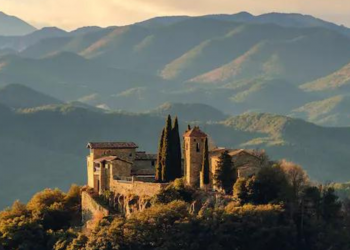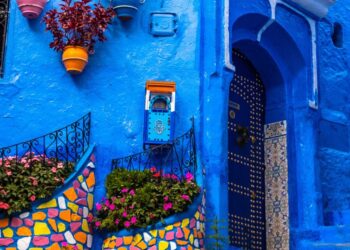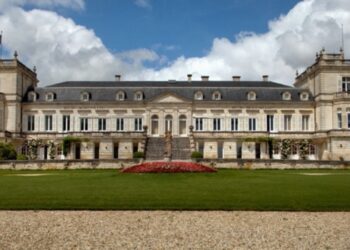Many would argue that Sicily is best known for its sweets — after all, it gave us gelato and the cannoli, but as the largest island in the Mediterranean (just ahead of Sardinia, Italy) it also beckons visitors with its rich history, beauty, and gastronomy. Its location and strategic importance to the Arab, Greek, Roman, Ottoman empires, meant each of those cultures left a big imprint on Siciliy’s hospitality, architecture, art, and way of thinking. And while it’s safer than ever, it is an appealing sun-soaked destination for those that love to walk a little on the wild side. Here are just 10 reasons Sicily is worth traveling for.
A Sweet Start
A typical breakfast in Sicily is granita — the sweet, icy treat that was invented on the island — served with brioche. Fluffier than sorbet and more refined than Italian ice, Sicilian granita is extra special for its fresh, seasonal Mediterranean ingredients, such as Sicilian lemons (a more floral variety, similar to Meyer lemons), fresh or bitter almonds, pistachios, Mandarin oranges, coffee, or black mulberry.
Baroque Glory
By Italian standards, Noto is a new city. It dates back only about 300 years, given it had to be almost entirely rebuilt after a devastating earthquake in 1693. Its gorgeous, golden limestone buildings are some of the loveliest examples of Baroque architecture in the Mediterranean, particularly when the light hits them just so at sunset. Another highlight is the annual Infiorata festivals in spring when the city’s main street quite literally becomes covered with “carpets” of colorful petals in elaborate designs.
A Hotel with a History
When Lucia Pascarelli, a 5th generation member of a family who owned a centuries-old estate on the southeast coast of Sicily, found herself single a few years ago, after decades of marriage, she returned to her family home and set about reinventing it as a uniquely feminine hotel. Now Donna Coraly — named in homage to her grandmother, a French baroness named Coralie — the boutique hotel has played a special role in history, first as the HQ of the United States forces during World War II and eventually the site of the signing of the Armistice of Cassibile, marking Italy’s surrender. Today the transformed property has six guest rooms all with softly canopied beds, turquoise-painted lava stone in the bathrooms, and traditional Sicilian Testa de Moro heads (but only the queens).
Ortigia (the Island)
One of the oldest places in Sicily, Ortigia (sometimes Ortygia) is a small Baroque island located just over a bridge from the larger, more modern city of Syracuse (once, more powerful than Rome). Occupied for more than 3,000 years and recognized as a World Heritage Site by UNESCO for its “remarkable testimony to Mediterranean cultures,” is far from undiscovered (it’s quite busy during high season, so visit May through June, or September through October), but the charms of wandering its narrow streets, grand piazzas, and seaside restaurants are worth it any time of year.
Ortigia (the Soap and Scent)
No trip to Sicily is complete without stocking up on soaps, perfume, creams, lotions, and candles from the gorgeous Ortigia. The beauty brand was founded on the island in 2006 by Sue Townsend, one of the founders of Crabtree & Evelyn. Made with natural ingredients native to Sicily and inspired by the island’s aesthetics, colors, and scents (the perfumes are distilled from local flowers by master perfumer Lorenzo Villoresi), everything about the products and packaging is delicious.
Slow Food in Buccheri
Up in the mountains above Syracuse, there’s the village of Buccheri where you’ll find the local institution restaurant Osteria U Locale (whose walls are covered with newspaper clippings attesting to its longtime greatness and notable clientele). It’s owned by a couple of brothers, including the charismatic food historian and cookbook author Pippo Formica — known only by his first name, as many such charismatic figures are, can be a bit tricky to pin down. So book a visit as part of a larger Sicily itinerary with DMC Italy Charme, and they’ll be sure he makes himself available.
Layers and Layers of History
Even if you aren’t a church person, the Duomo of Syracuse is seriously impressive, and it’s the best testament to the blend of historical influences that makes Sicilians so proud. The towering limestone structure was built in 480 B.C. as the Greek Temple of Athena and remains the famous Doric monument in all of Sicily. As empires rose, dominated, and fell, it was reincarnated as a Roman Catholic church, a mosque, another church, a Spanish-style church, and is now a living mixture of all of those influences.
The Dessert Master
Not many dessert experts make it onto Chef’s Table, but Corrado Assenza did, in 2018, for his mad-scientist work at his Caffè Sicilia in Noto. A genius with granita, cannoli, and other Italian sweets, Assenza is the fourth generation of the family that has run the café since 1892. He studied agriculture in Bologna (“the Yale of Italian agriculture schools,” he says) and came back with an education that encompasses physics, chemistry, biology, zoology, and history, all of which come into play through his cuisine. He’s especially proud of bringing back traditional ingredients that were on the verge of being lost. He also has a workshop in the back for experimenting with taste, like his sublime tomato granita.
An Incredibly Active Volcano
One of the highest volcanoes in Europe, and one of the most active in the world, Mt. Etna is usually letting off steam in some form or another. As long as you stay away from the summit, the otherworldly black lava fields are generally safe to hike (with a smart guide, of course). But in 2021, for instance, there was so much activity that the peak’s official height increased by about 100 feet. There are also a variety of hiking trails on the lower flanks of the mountain, a cable car, and a narrow-gauge railway around the volcano.
An Ancient Seaside Amphitheater
A must-see in Taormina, the Greek theater has a fantastic setting with a view toward the Calabrian and Ionian coasts and the cone of Mt. Etna. It’s believed that construction began in the 3rd century B.C., with the idea of it being a home for dramatic or musical performances. Like everything else on Sicily, it was embellished by everyone who followed the Greeks. That’s why there are Roman columns and statues, added during the time when the Romans used it for gladiatorial battles. With such events behind us, it’s back to its original use, as a splendid venue for today’s contemporary music acts.






